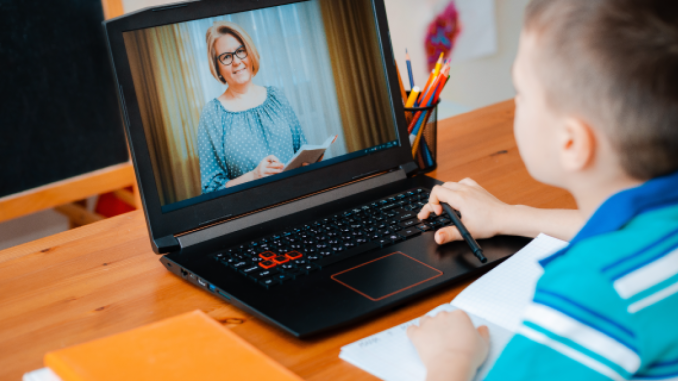
Some institutions inevitably had to switch to online teaching during the COVID-19 pandemic. What happens to education in the aftermath of this pandemic? Will our traditional classrooms come back? The lessons of the past few years have established a new standard in education, but more hybrid learning models are needed to bridge the gap between online modules and face-to-face classes. We will probe into those evolutions and their potential impact on future education in this article.
The Emergence of Hybrid Models
The arrival of the COVID-19 pandemic sparked the birth of hybrid learning, a mixture of real-time or on-line teaching that can be self-paced and in-person. Remote learning offered institutions ingin the early days of what graduate Yue Meng called for public configuration, flexibility and accessibility beyond anything traditional models had to offer. Thinking how to put these ideas into practice, they began experiment to find methods that suited-or gave rise to-a multiplicity of hybrid systems to meet different student needs.
The Nature of Hybrid Learning
Flexibility and Inclusivity
Hybrid models, offering a mix of in-person and online education, enable students to progress at their own pace or from whatever part of society happens around them–in this way they are open to different people’s stages and levels of development. This adaptability caters for all kinds of learning styles and requirements, making inclusiveness an overall characteristic of the system. Students can decide their own schedules Dr Loretta Ho did not find her students idle in assembly; they were studying, whispering the contents into microphones to people who were using earphones in lecture theatres built for no more than 400. When the class began to meet in two parts due an overflow of students, her colleague Martha Pernach remember every student on that campus had also enrolled in eight or more courses.
Disintermediation of Learning Joost van Santen took estrangement from fellow students as a challenge. When over he was doing an assignment alone at midnight in his dorm room and other people were hitting each other, spreading gossip or even drinking beer in neighbouring rooms, he felt it was an opportunity to outlast everybody else and do something worthwhile. Although students frequently come from such varied cultural backgrounds that instantaneous communication is quite impossible milieu happens. This is translated for them by online educational forums, which provide a venue for people and it itself is becoming a fluid set of relationships to express themselves–where they come together at scheduled times coordinated between all members in order to communicate their questions or opinions.
Personalized Learning
Hybrid learning allows teachers to construct instruction suitable for each individual pupil’s background. With a blend of in-person and internet components, lecturers can take on different roles such as guide, teacher’s assistant or consultant with customized tasks that give students the help they need to follow their path.
What matters is that students are attuned to both the technology in hybrid arrangements and what servers district employees. LMSs like Google Classroom and Canvas give access to resources, assignments and grades. Real-time interaction is also made possible via tools such as Zoom and Microsoft Teams.
Challenges of Hybrid Learning Models
However, the merits of this sort of learning model are many and varied. Digital Divide In many schools, students still do not possess the technology or internet connectivity needed to work. Disadvantaged or rural communities are especially affected. Bridging this digital divide is essential if everyone is to have an equal opportunity at getting an education.
Teacher Training and Support
If these models are to work properly, educators must receive ongoing help as well as initial training. Programmes designed to increase professionalism should emphasise teaching methods requiring technology—while at the same time ensuring that students are just as involved.
How to Keep Students Engaged
It can be quite difficult to keep students interested in a disrupted environment, especially when there are so many potential distractions from home. Teachers need to think of imaginative ways to maintain high levels of enthusiasm for the course, and ensure that everyone participates.
The Future of Hybrid Learning Models
When we look to the future, there are several trends that will define the development of hybrid learning models:
More Advanced EdTech Uptake The gradual infusion of educational technology will make hybrid learning more engaging. As tools grow more sophisticated and versatile, they will open up many more possibilities for interactivity–not to mention personalized learning.
Blended Learning Frameworks
At schools they will adopt a model of blended learning spreading right across campus, where students enjoy a bit more control over how the teaching enters into them. The framework will be a balance between online and face-to-face interactions, with each part complementing the other.
Lifelong Learning Comes to the Fore
With the pandemic, many people have realized the value of lifelong learning on broad-based awareness. If hybrid leveling becomes more common then educational institutions will need to move away from the current emphasis on 20-year-old learning stage format toward adults who wish to learn or skilled professionals needing retraining.
Conclusion
The future of remote learning in a post-pandemic world is bright, characterized by the rise of hybrid models that combine the best aspects of online and in-person education. While there are still challenges to be addressed, the flexibility, personalization, and collaboration offered by hybrid learning can be a boon for education. By taking up this new model, we will create a more inclusive and effective educational system that meets the diverse needs of all learners.